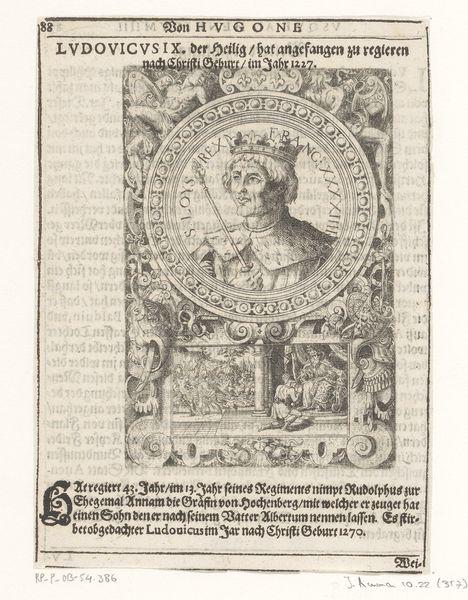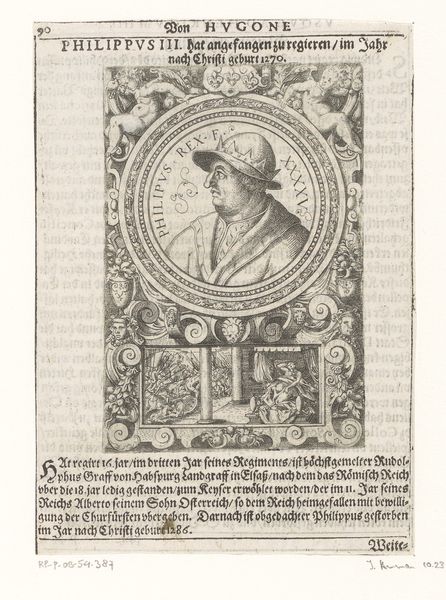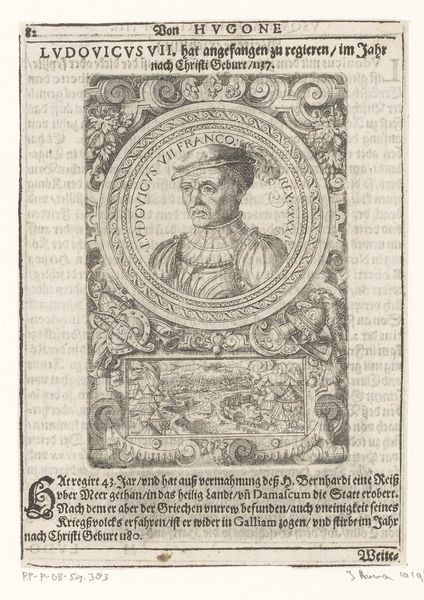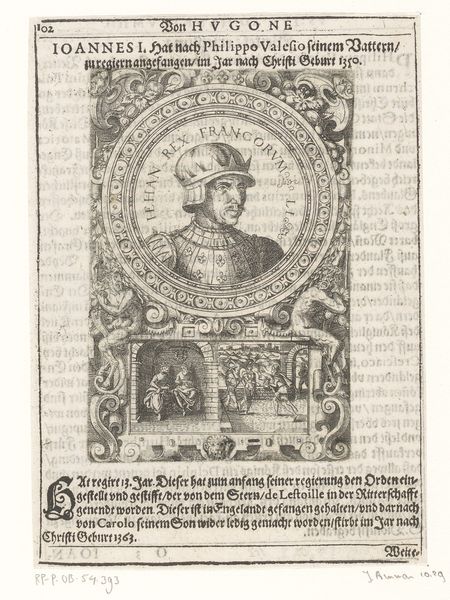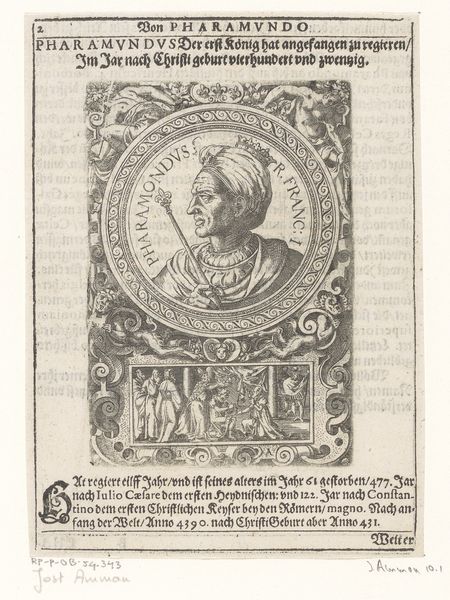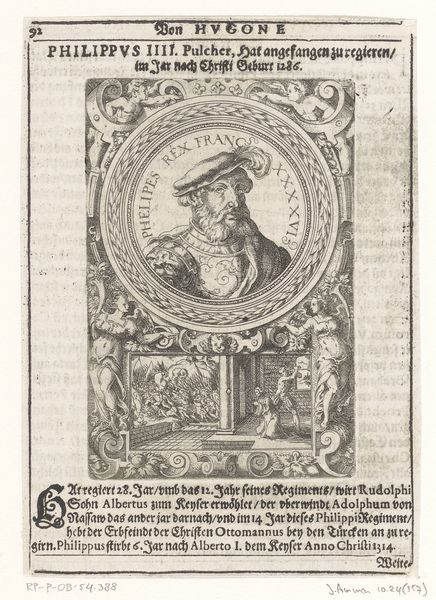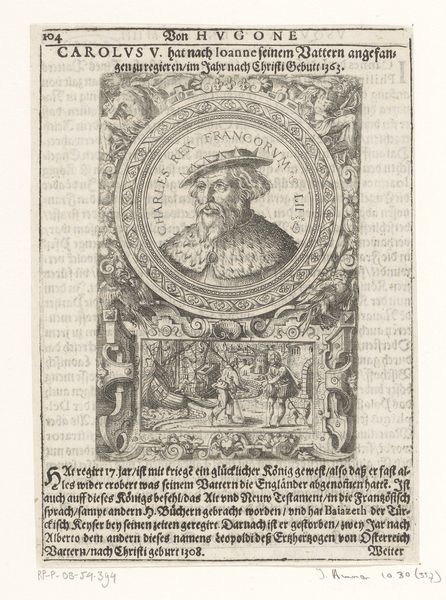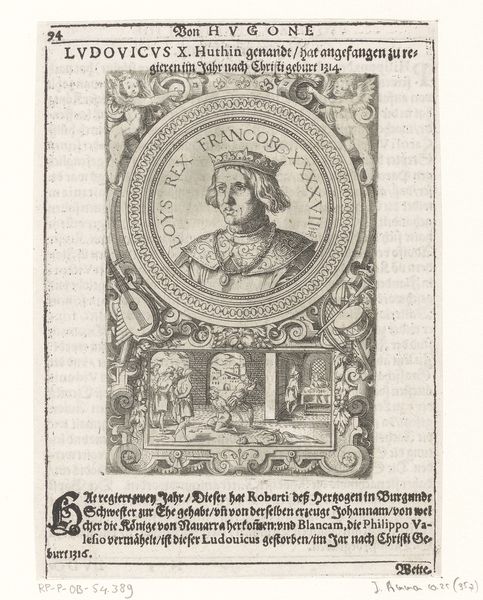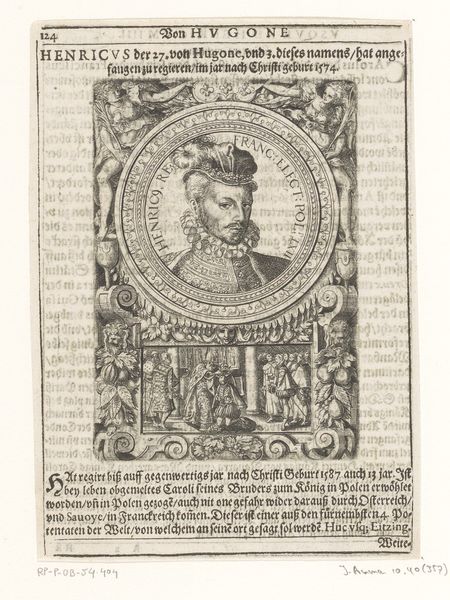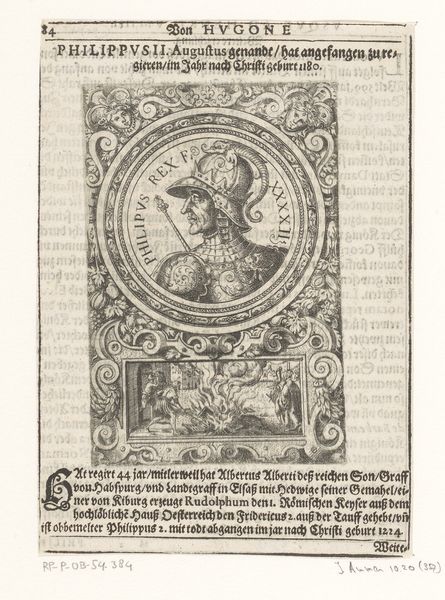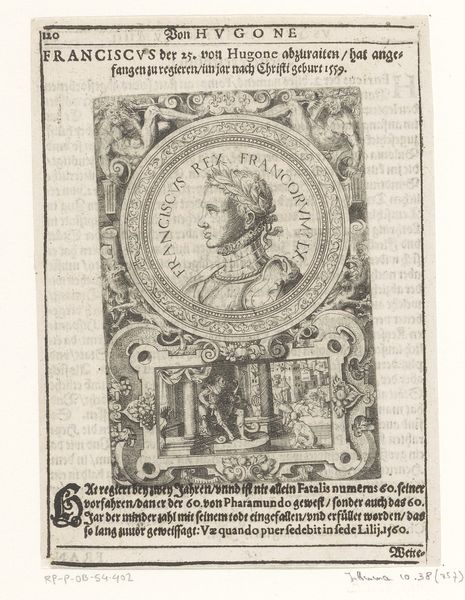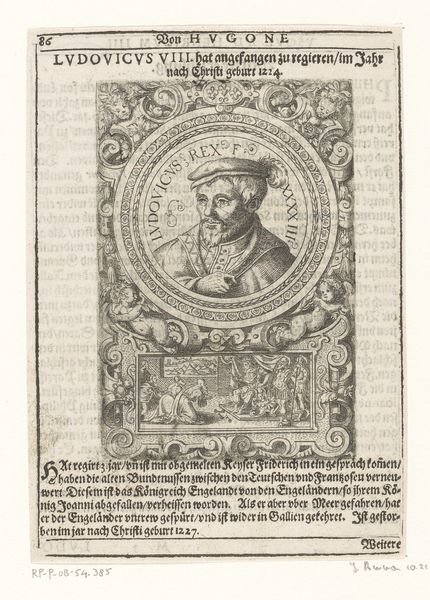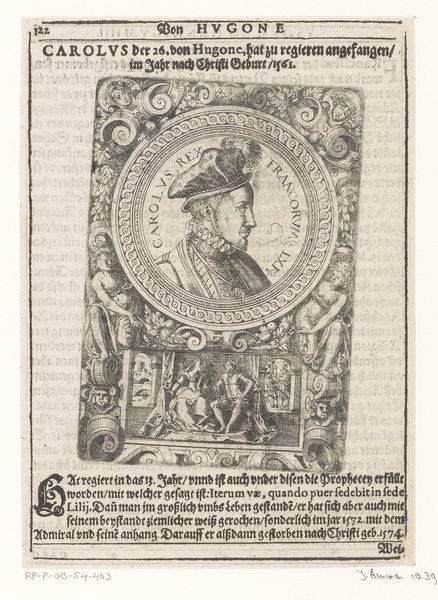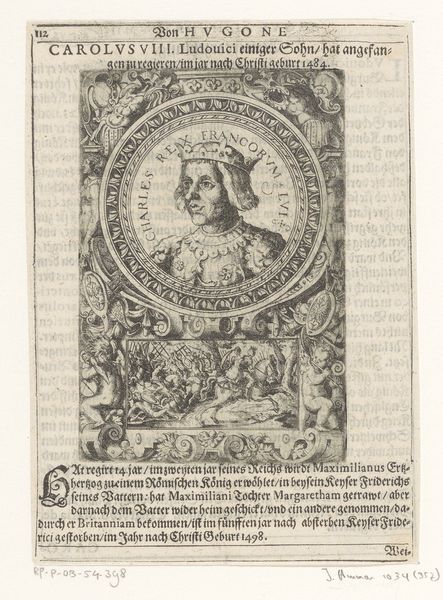
Dimensions: height 117 mm, width 79 mm
Copyright: Rijks Museum: Open Domain
Editor: This engraving, "Portret van Frans I van Valois-Angoulême, koning van Frankrijk," by Jost Amman, dates back to 1598. The tight hatching of the pen work lends a great sense of texture. I'm struck by the contrast between the detailed portrait and the looser sketch of a battle scene below. How would you interpret the choices Amman makes in composing this print? Curator: Aesthetically, the division Amman creates between the portrait and the battle narrative contributes to a formal tension within the composition. Note the contrast in the application of line weight. The density and precision dedicated to rendering the royal figure command the eye, reflecting an emphasis on the individual. However, the compressed scene below hints at wider historical forces and the contextual background of his reign. Editor: It's interesting you point out the difference in the linework. So you're suggesting that contrast between styles serves to highlight specific elements within the piece, placing them in a visual hierarchy? Curator: Precisely. Also, consider how Amman manipulates the frame—the circular border around the portrait, compared with the rectangular field of the battle. It imposes a visual structure to guide our reading. The carefully detailed frame draws the eye inwards towards Francis' likeness, and this formal element establishes a separation from and an order over the depicted chaotic battle, giving order to the representation. Editor: So, it's less about accurately depicting a historical moment and more about using visual techniques to create meaning within the print itself. Curator: Indeed. It's in the meticulous construction and formal qualities of the work itself that the print's impact truly resides. The artist manipulates medium and arrangement to underscore key concepts within. Editor: I see. Thanks for showing how paying attention to these internal relationships allows us to find deeper significance. Curator: My pleasure. Attending to such structural details reveals so much.
Comments
No comments
Be the first to comment and join the conversation on the ultimate creative platform.
